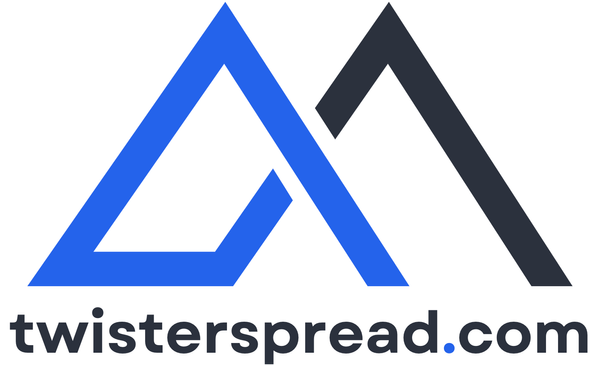The benefits of co-creating
Discover insights on co-creation from CountAct co-founders Lounis and Iliès Lakhal. Learn how involving clients in the creative process leads to real-time feedback, deeper understanding, and innovation.

Hi there, Tom here! This week we'll be breaking down a talk on the topic of co-creation that we attended on Tuesday, in order to share what we learnt. It was given by Lounis Lakhal and his older brother Iliès, co-founders of CountAct, a French startup that specialises in security and crisis management. The conference they gave was hosted by Pépite oZer, the incubator we are a part of, here in Grenoble, France.
This article will be structured slightly differently to what we usually write, so feel free to give us feedback on this format!
The CountAct strategy to success
Let's start off by summarising what they explained to us, going off of their story.
What is co-creation?
The brothers explained that, at its core, co-creation means involving the client directly in the creative process. It isn’t just about asking clients what they want; it’s about bringing them into the design and development process, creating something that truly aligns with their needs.
Whether you’re building a digital tool, a marketing campaign, a service, or even a physical product, co-creation can be a game-changer. Rather than just gathering requirements and disappearing into a development cave, co-creation is about engaging with the client every step of the way. Think of it as brainstorming around a table, where ideas are freely exchanged, tested, and refined.
Why does co-creation matter?
Why not just rely on client feedback post-delivery? According to the CountAct team, here’s why co-creation is different and better:
- Real-time feedback: Instead of waiting until a product is almost finished, clients can give feedback in real-time, allowing you to adjust and iterate faster.
- Deeper understanding: Sitting down with clients helps you see their vision more clearly. You can ask questions, challenge assumptions, and get to the root of what they really need—not just what they think they want.
- Ownership: When clients are part of the process, they feel a sense of ownership over the product. They are more invested in its success, and less likely to request disruptive changes late in the project.
How to run a successful co-creation process?
- Setting the stage: The first step in any co-creation session is to set clear expectations. Everyone needs to understand that this is a collaborative process, not a sales pitch or a performance. You're not there to "sell" the client on an idea, but to build it together.
- Empathy is key: You can’t co-create without first understanding the client’s pain points. Start the session by asking open-ended questions that help uncover their biggest challenges and goals. It’s important to listen deeply at this stage. Letting the client articulate their frustrations and desires in their own words yields critical insights that shape the entire co-creation process. For example, instead of asking, “What features would you like?” you might ask, "What’s your biggest frustration in your daily workflow?". The conversation will likely grant you much richer information.
- Prototyping to test ideas early: One of the key advantages that they highlighted is that you can test ideas before they go too far down the pipeline. They explained, you can even create basic wireframes or low-fidelity prototypes to illustrate ideas. This visual element helps everyone see if a concept works or if adjustments are needed. During their first sessions, they made their clients play with shoe boxes and pieces of paper!
- Iterating based on real-time feedback
Co-creation is a cyclical process. Once the initial brainstorming session is complete, they don’t stop there, and continue the conversation throughout the development process by scheduling regular check-ins to present progress and gather additional feedback. This iterative approach ensures that the product evolves in the right direction with continuous input from the client.
The benefits of co-creation
We found that the following three elements best summarise what makes the Lakhal brothers' strategy so powerful:
- Increased trust: Clients appreciate being involved. The'll trust you more when they see you’re invested in their success and aren’t just delivering a pre-packaged solution.
- Reduced risk: By aligning expectations early and often, you avoid major surprises or misunderstandings down the line. Clients know what they’re getting and are much happier with the end result.
- Innovation: The collaborative nature of co-creation often leads to breakthroughs neither side would have reached alone. It pushes both sides to think outside the box and come up with solutions that are unique.
Integrating their advice
In this section, we'll go over how Nicolas and I intend on taking advantage of their advice, in order to improve our next project.
What is the next project?
Let's start by considering the project. I won't go into that much detail, because it would make this article way too long.
Here is the pitch: In my sport (mogul skiing), athletes are scored by judges according to the following three criteria – jumping technique, skiing technique and speed. The results are condensed into a rather complex table as follows. Currently, only few coaches analyse this data, and those who do often use inefficient tools such as Excel. Our project is to make the best data driven coaching tool, to help athletes prepare for the upcoming olympics in 2026.

Before attending their talk
We started this project by building the data extraction tools, and doing all the maths needed to provide the statistics. Once that was done, we built a visual interface in order to show off the tool as a POC (Proof Of Concept) to our potential clients. Here is an example of what it looked like:

Then, and only then, did we go out to talk to coaches and athletes, in a commercial manner, in order to sell it.
This is so far off of the shoe boxes and paper sheets Lounis and Iliès used to demonstrate their vision, and brainstorm for ideas. I believe we made a mistake back then, and need to learn from it in order to improve.
After the talk
Here is our plan in order to make the most out of this idea, and provide athletes with a well deserved performance tool. We'll apply it as we work on transforming our POC into a final product this winter.
- Co-creating with coaches: Instead of showing off a "finalised" product to coaches, and asking them if they think it's worth their money, we plan on doing the exact opposite. We're looking to sit down with as many coaches as possible, and ask them what they need, and where they are currently struggling.
- Co-creating with athletes: We previously didn't even talk to one athlete, as they weren't our target personas. However, they for sure are the end user, or at least the people for whom we are building the app. So it seems obvious now we should apply this same process with athletes.
- Mixing audiences: The relationships between coaches and athletes can often be complex, making communication tough. We believe having coaches and athletes in a same room, brainstorming about their common passion can be an amazing way to innovate.
We believe this will both improve our chances of success and make the product better at the same time.
Conclusion
Here is a quick summary of what was addressed in this article:
- Co-creation fosters deeper client relationships by involving them directly in the process, leading to greater trust and understanding.
- Real-time feedback and iteration help refine the product throughout development, reducing risks and aligning expectations.
- Involving all stakeholders, including both coaches and athletes, will ensure the product addresses the needs of everyone involved. Mixing audiences for brainstorming can lead to breakthroughs, especially in contexts where communication between groups is traditionally challenging.
- Collaboration drives innovation, as combining perspectives from different users leads to solutions neither party would have thought of alone.
We'd like to say a massive thank you to Iliès and Lounis, who gave an amazing talk, as well as to Pépite oZer for hosting the event.
Thanks for reading! If you’ve co-created with clients before, we’d love to hear your experiences in the comments. Let’s keep the conversation going!





